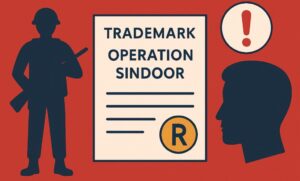Table of Contents
ToggleWhat is NBA?
NBA stands for National Biodiversity Association which is a statutory body that was established in 2003 by the Central government for the purpose of the Biological diversity Act, 2002 to regulate access and equitable sharing of benefits arising from any biological resources.
What is a Biological Resource?
As per Section 2(c) of the Biological Diversity (Amendment) Act (BDA), 2023, “biological resources” includes plants, animals, micro-organisms or parts of their genetic material and derivatives (excluding value added products) with actual or potential use or value but does not include human genetic material wherein “derivative” means a naturally occurring biochemical compound or metabolism of biological resources, even if it does not contain functional units of heredity.
When Do We Need NBA Approval?
It is mandatory to apply for NBA approval under BDA 2002 through Form 3 with appropriate fee (INR 500) before patent application in or outside India under the following condition:
- If the invention that is to be patented is based on any research or information on a biological resource wherein the source and geographical origin of the biological material is from India.
- If the biological resource is a plant, before applying for plant breeders right in any country other than India.
The NBA approval shall be obtained prior to the grant of the Patent provided that the NBA shall dispose of the application for permission made to it within a period of ninety days from the date of receipt thereof. In case of foreign jurisdiction, NBA approval shall be granted only to those countries that are intimated in the Form 3.
Relevant Sections
- As per Section 10 (4)(ii) of The Patent act, 1970, an applicant must disclose the source and geographical origin of the biological material in the specification, when used in an invention.
- Section 6 of BDA act, 2023:
(1A) Any person applying for any intellectual property right, by whatever name called, in or outside India, for any invention based on any research or information on a biological resource which is accessed from India, including those deposited in repositories outside India, or traditional knowledge associated thereto, shall register with the National Biodiversity Authority before grant of such intellectual property rights.
(1B) Any person who has obtained intellectual property right, by whatever name called, in or outside India, for any invention based on any research or information on a biological resource which is accessed from India, including those deposited in repositories outside India, or traditional knowledge associated thereto, shall obtain prior approval of the National Biodiversity Authority at the time of
commercialization.
- As per section 19 of BDA act, 2023, Any person who intends to apply for a patent or any other form of intellectual property rights, whether in India or outside India, referred to in of section 6 (1), may make an application to the National Biodiversity Authority in such form, on payment of such fee, and in such manner, as may be prescribed.
When Do We Not Need NBA Approval?
NBA approval is not required in following cases:
- If the biological resource is neither obtained from India or sources from India
- If the invention does not relate to a biological resource defined under the BDA act, 2002 such as Value-added products, Biowaste and synthetically prepared biological material.
Relevant Section & Definitions
- As per Section 2(p) of the BDA, 2002 “value added products” means products which may contain portions or extracts of plants and animals in unrecognizable and physically inseparable form.
- Biowaste – Waste that is generated after the exhaustive economic use of the biological resource.
- Synthetically prepared biological material includes secondary metabolites from microbes, synthetic sugars, synthetic biomaterials, nanomaterials and so on.
Why Should Apply For NBA Approval?
The following applicants should apply for NBA approval before patent application disclosing biological resources from India:
- Indian Citizen
- Non-Indian
- Non-Resident Indian (NRI)
- Entities registered or incorporated in India.
- Entities not registered or incorporated in India.
Why To Disclose Biological Resource & Apply For NBA Approval?
The National Biodiversity Authority may, while granting the approval under section 6(2) of BDA, 2002, impose benefit sharing fee or royalty or both or impose conditions including the sharing of financial benefits arising out of the commercial utilization of such rights from biological resources.
The Biological Diversity Act, 2002 has a penal provision in this regard under section 55 (1) which provides that “whoever contravenes or attempts to contravene or abets the contravention of the provisions of the section 3 or section 4 or section 6 shall be punishable with imprisonment for a term which may extend to five years, or with fine which may extend to ten lakh rupees and where the damage caused exceeds ten lakh rupees such fine may commensurate with the damage caused, or with both.”
If the complete specification does not disclose or wrongly mentions the biological material source and geographical origin, then, according to clause (j) of Sections 25(1) and 25(2) respectively of the Patents Act, 1970, it will create a ground for pre and post-grant opposition.
If NBA approval is not obtained/submitted, a controller can file an objection in the examination report. Even if one did not raise the complaint during the examination process, it could be brought subsequently.
How To Apply For NBA Approval?
For the sake of patent application, a person seeking approval from the NBA must make an application on NBA Form 3 through ABS (Access and Benefit Sharing) e-filing with INR 500 as a fee. The particulars that are required for Form 3 application is given below:
1. Full particulars of the applicant including
(a) Name of the applicant (s) as indicated in the IPR application submitted to the Patent Office.
(b) Complete address of the applicant (s) with state/province name/country and PIN code/zip code, Telephone/ Fax Number (Land line with code), Mobile Number and Email address.
(c) Complete professional profile or bio-data of the applicant (s) not exceeding one page.
(d) Bona fide letter in original from the institution or organisation with whom the applicant (s) is affiliated.
2. Details of the invention on which IPRs sought including
(a) Full and exact title and abstract of IPR on which application is made.
(b) Patent office reference number, if application is filed before the Patent Office.
3. Details of the biological resources and or/associated knowledge used in the invention including
(a) Scientific name(s) of the biological resource(s)
(b) common name(s) of the biological resource(s)
(c) Details of associated knowledge used and source of such information, if applicable.
(d) Provide copy of approval of NBA for access to biological resources and/ or associated knowledge (if the applicant is covered under Section 3(2) of BD Act)
4. Geographical location from where the biological resources used in the invention are collected
(a) Indicate the name of village, panchayat, block, taluk, district and state from where the biological resource(s) were collected.
(b) If the biological resource(s) were collected or procured from the Institute/ Organization/ Company/local trader/individual, provide exact contact details (address and phone number) of such supplier and invoice/evidence for such purchase.
(c) Indicate whether the material was sourced from wild/cultivated
5. Details of any traditional knowledge used in the invention and any identified individual/ community holding the traditional knowledge
(a) Provide full details of individual/communities holding such traditional knowledge (b) In case, this knowledge sourced from texts provide source of such information (photocopies of relevant information may be attached wherever applicable)
6. Details of Institution where Research and Development Activities carried out
(a) Name and address of the institute where research was carried out.
(b) Please provide details of collaboration with other institutions/organization/company, if any, during the course of research activities.
7. Details of economic, biotechnological, scientific or any other benefits that are intended or may accrue to the applicant due commercialization of the invention
(a) Nature of benefits envisaged
(b) Investment in Research and Development, in the current invention.
8. Declaration by the applicant(s).
9. Authorization letter from the applicant (s) to any agent or representatives.
Conclusion
Any patent applicant should be mindful while using biological resources from India for their research and innovation. It is mandatory to apply for NBA approval before any patent application in or outside India and the respective details should be disclosed in the description part of the specification.






